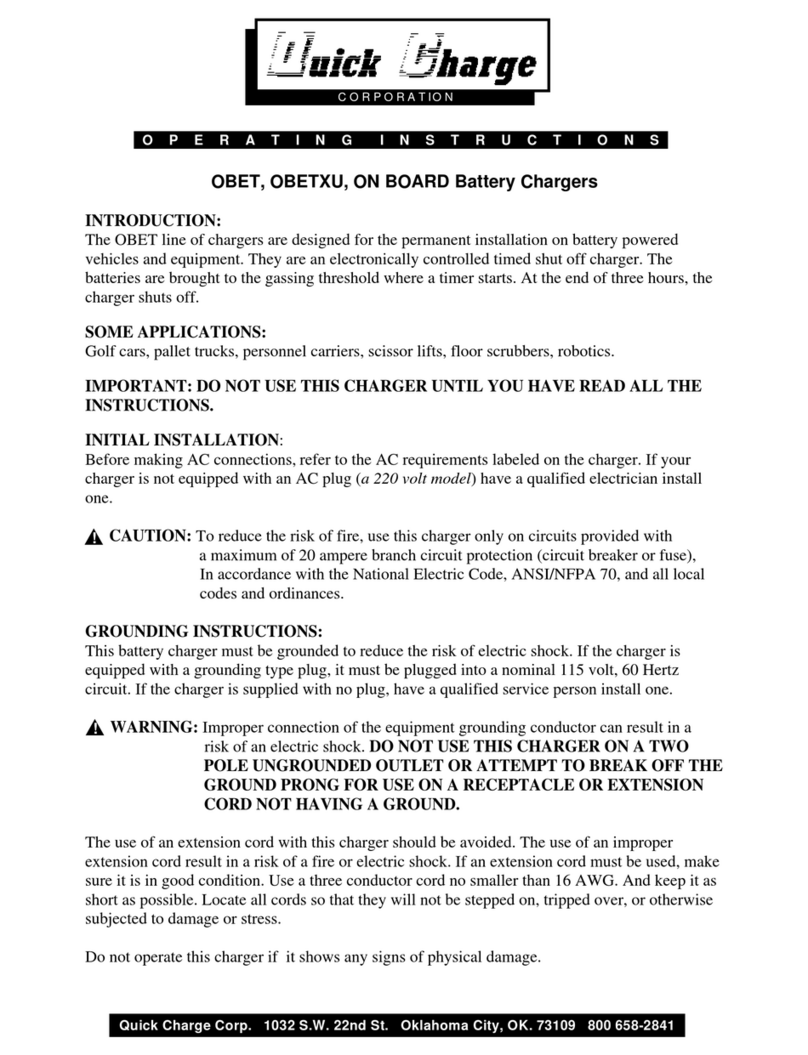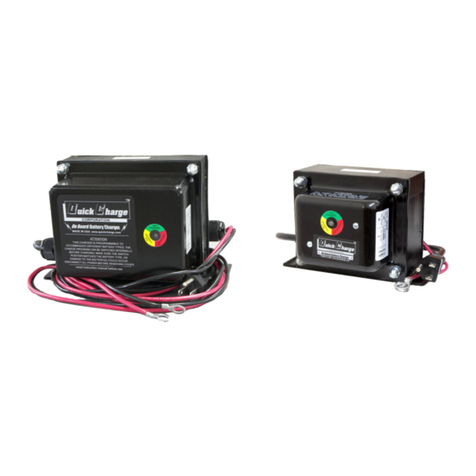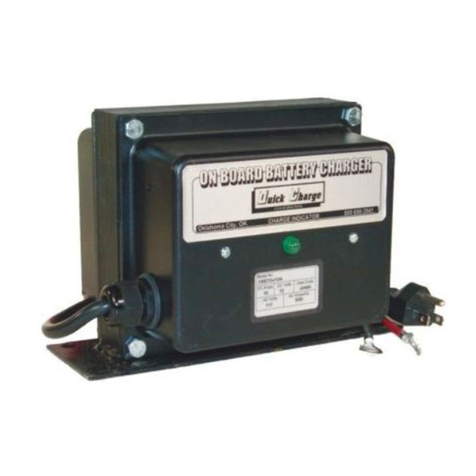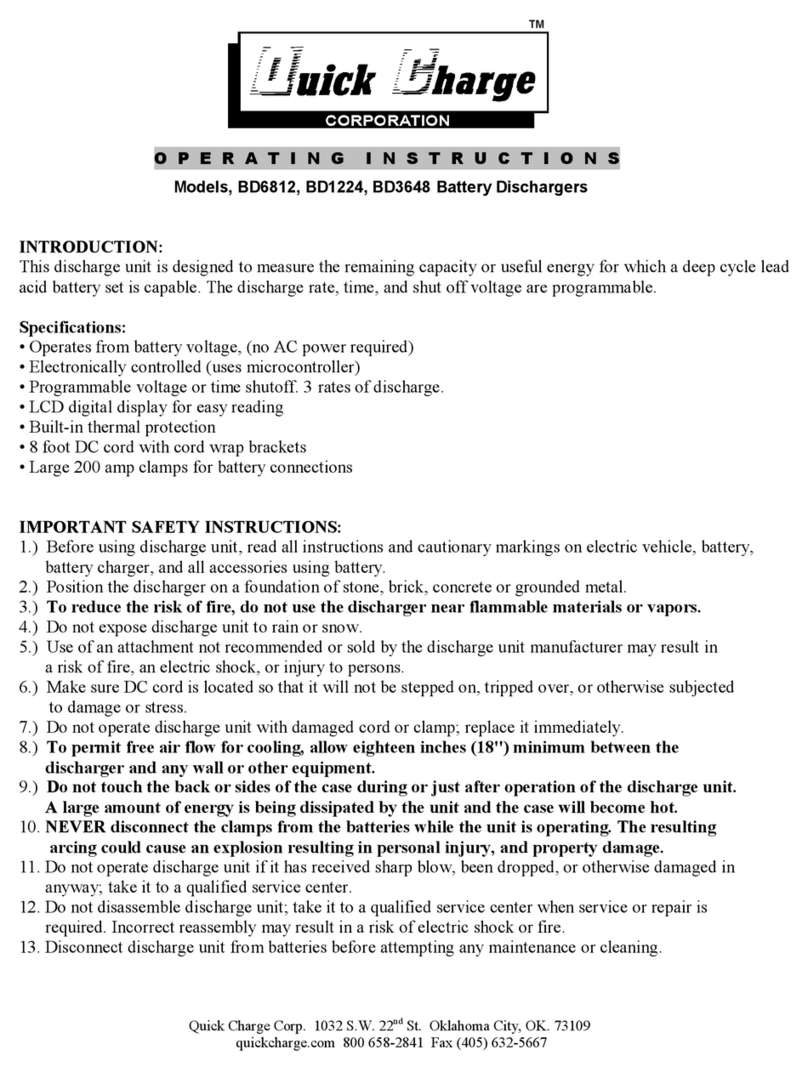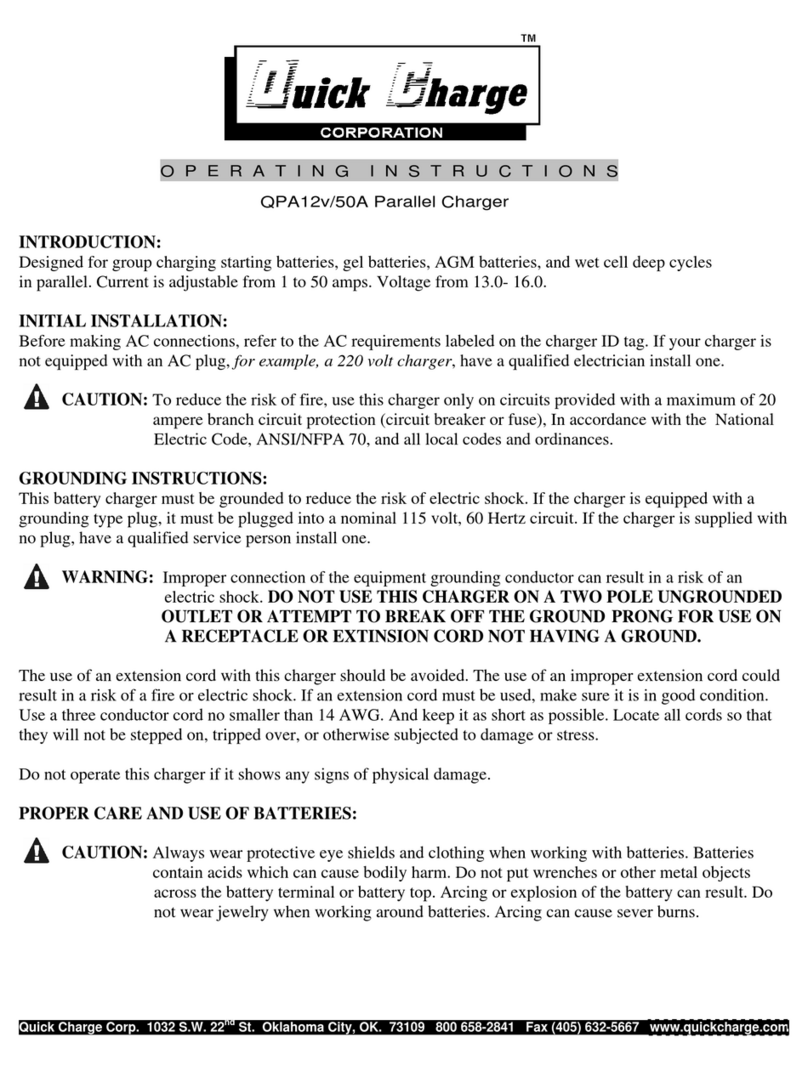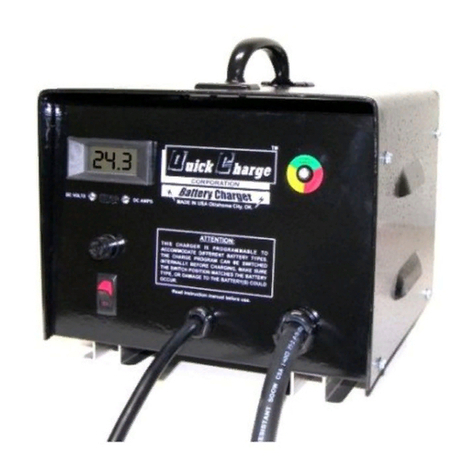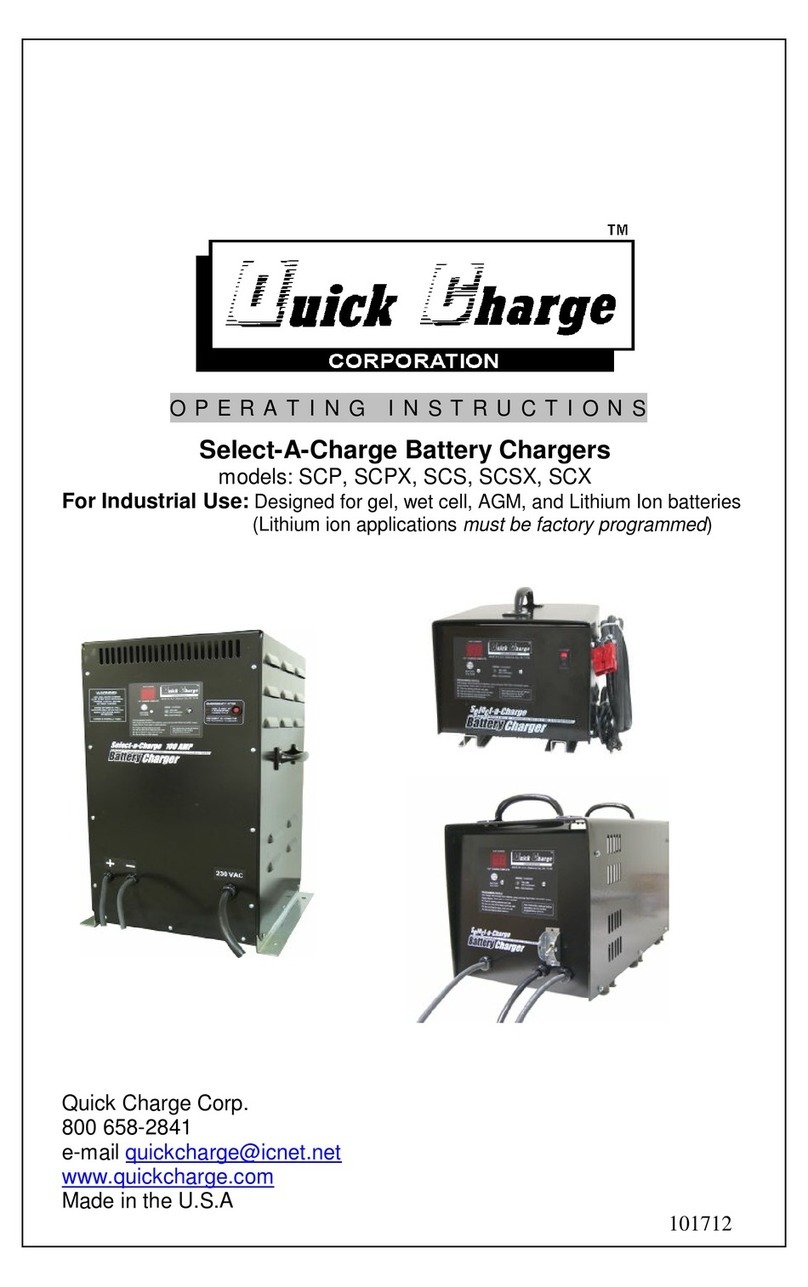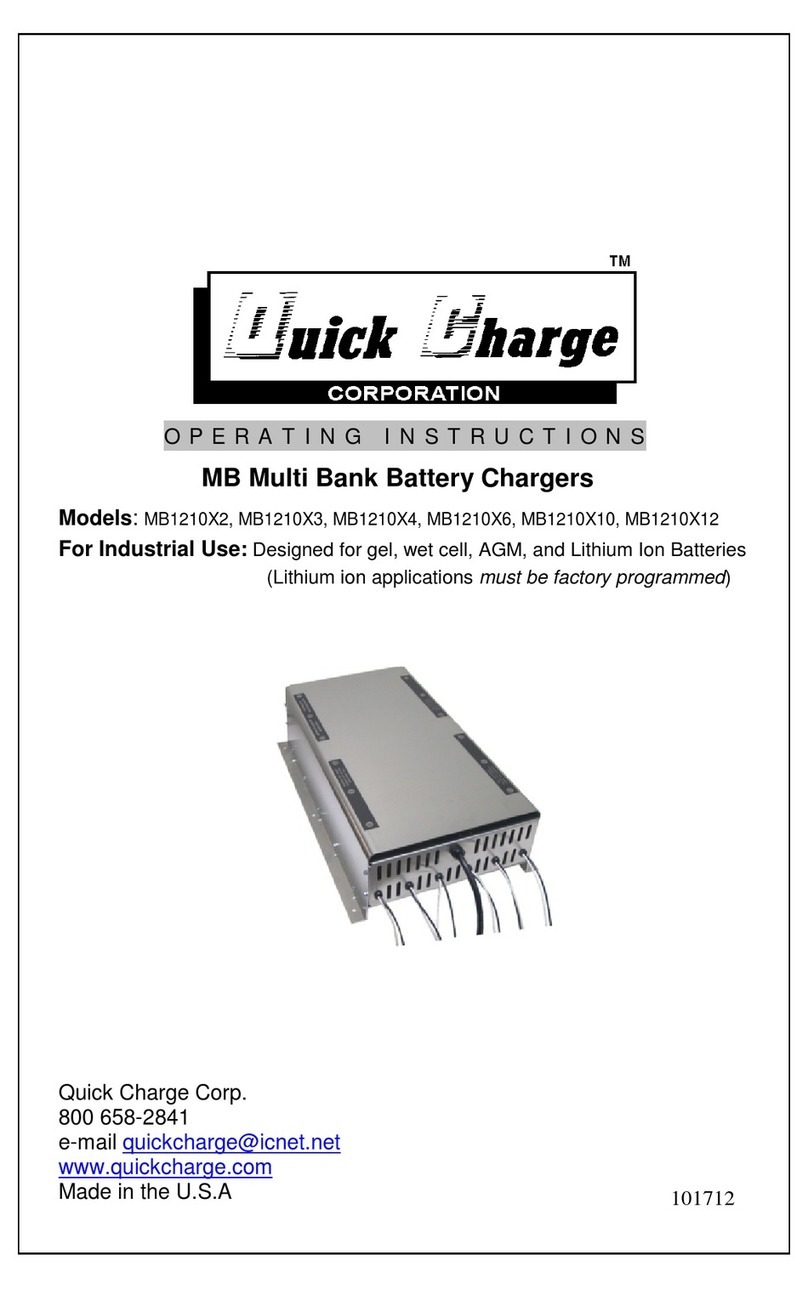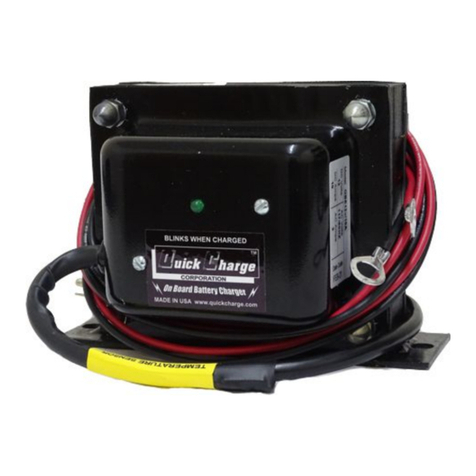
TROUBLE SHOOTING:
CAUTION: DO NOT DISASSEMBLE THE CHARGER. Incorrect assembly may result
in a risk of electric shock or fire. Contact factory.
DANGER: To reduce the risk of electric shock, always disconnect both the AC power
supply cord and the output leads or connector before attempting any
maintenance cleaning.
1). “AC POWER” LED WILL NOT COME ON WHEN POWER SWITCH IS ON.
Check that you are plugged into a live circuit. Check AC cord, plug and receptacle for
damage. Check the fuse on charger. If the element is blown, replace with a fuse of the
exact ratings.
3). FUSE ON CHARGER OR AC LINE BREAKER BLOWS.
The charger may be shorted internally.
4). NO POWER IS PRESENT ACROSS THE DC LEADS WHEN A VOLT METER IS
CONNECTED.
Good. The charger will not turn on until the clamps are connected to the battery.
5). THE AC POWER LED COMES ON, BUT NO CURRENT REGISTERS ON THE
AMMETER WHEN THE RATE CONTROL IS INCREASED.
One of the batteries in the line may have an open cell which will stop current flow to all
the batteries. One of the jumper wires may be broken at the clamp. A poor connection from
charger clamp to battery post. (Don’t readjust with power on)
QUICK CHARGE QPA6-127v/6A Battery Charger
“LIM ITED WARRANTY”
Quick Charge Corporation warrants the QPA6-127v/6A battery charger for one (1) year from the date of purchase.
After the warranty period, chargers returned to the factory for repair will be charged a minimum rate of $25.00. Charger will be
returned, freight and repair charges, C.O.D. unless other arrangements have been made.
This warranty covers all defects in manufacture and performance, provided the unit is operated in compliance with manufacturer’s
operating instructions.
For repairs to be made at the Quick Charge factory, a charger and/or component(s) should be sent, freight prepaid to Quick
Charge at: Quick Charge Corp.
1032 S.W. 22nd St.
Oklahoma City, OK. 73109
Quick Charge, will at it’s option, repair or replace the charger or component in question. The repaired item will then be returned,
freight prepaid by Quick Charge. This warranty is void if the charger or component have been altered, changed, or repaired by
anyone not authorized by Quick Charge, or if the charger or component, have been subjected to misuse, negligence, or harsh
environmental conditions. (Except those chargers designed for such conditions)
If returning the charger to the factory is not practical, replacement parts may be shipped to the customer for field repair at no
charge. On parts such as circuit boards, the customer will be required to return the board suspected to be defective to Quick
Charge, freight prepaid. If such defective parts are not returned, the customer will be invoiced for the repair parts.
Field repairs are made at the user’s own risk. “Authorization” by Quick Charge to repair refers to maintaining the warranty only.
Quick Charge assumes no responsibility or liability for field servicing, and shall not be responsible for incurred travel or labor
charges.
Quick Charge corporation shall not in any event be liable for the cost of any special, indirect or consequential damages to
anyone, product, or thing.
This warranty is in lieu of all other warranties expressed or implied. Quick Charge neither assumes nor authorizes any
representative or other person to assume for us any liability in connection with the sale of this product.
4
